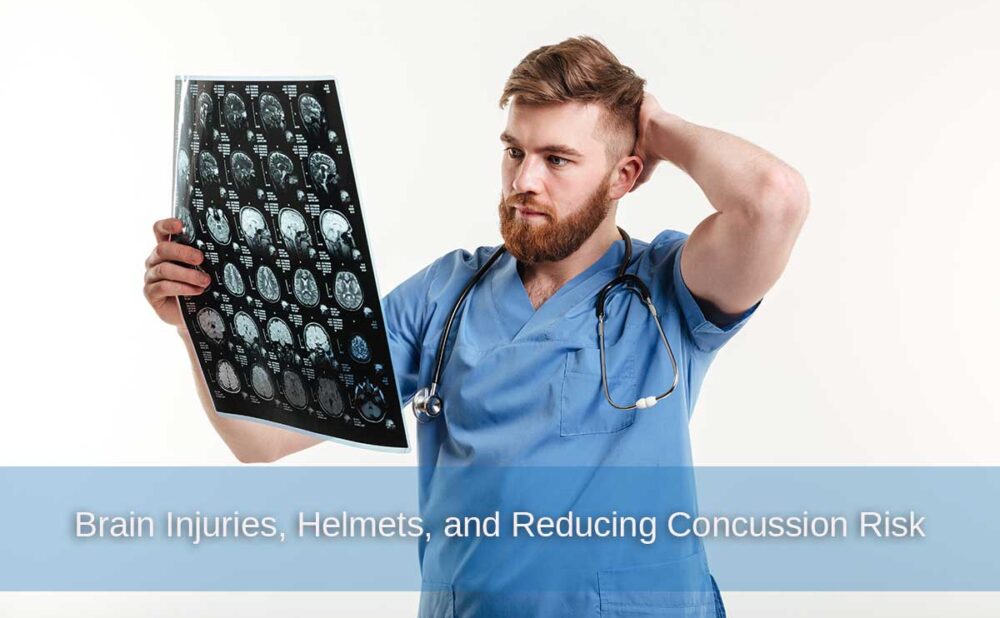Brain Injuries, Helmets, and Reducing Concussion Risk — Understanding the Impact
Traumatic brain injuries (TBIs) are among the most serious and complex injuries in both sports and everyday accidents. Concussions—classified as mild TBIs—can have profound short- and long-term effects on brain health, especially when repeated or left undiagnosed. One of the most accessible ways to mitigate the risk of such injuries is the use of helmets. However, while helmets are critical in reducing the severity of head trauma, they are not a panacea for concussions. This article explores the relationship between brain injuries, helmet use, and strategies to reduce concussion risk.
Understanding Brain Injuries and Concussions
A concussion occurs when a blow or jolt to the head—or a hit to the body that causes the head to move rapidly—disrupts normal brain function. This rapid movement can stretch and damage brain cells, leading to symptoms such as:
- Headaches
- Confusion
- Dizziness or balance issues
- Memory problems
- Sensitivity to light or noise
- Emotional changes
Repeated concussions can lead to long-term neurological issues, including Chronic Traumatic Encephalopathy (CTE), a degenerative brain condition linked to mood disorders, cognitive decline, and motor dysfunction.
The Role of Helmets in Head Protection
Engineers design helmets to protect the skull and brain by absorbing and dispersing the force of impact. Helmets are widely used in sports, cycling, construction, and motor vehicle activities. Modern helmets often include:
- Foam liners to absorb shock
- Hard outer shells to prevent skull fractures
- Padding systems for fit and added protection
- MIPS (Multi-directional Impact Protection System) to minimize rotational forces
These features significantly reduce the risk of catastrophic brain injuries such as skull fractures and bleeding. However, no helmet can fully prevent concussions, especially those caused by rotational forces or sudden deceleration that do not involve direct impact.
Why Helmets Don’t Eliminate Concussions
Despite their effectiveness in reducing severe head trauma, helmets have limitations when it comes to concussions. This is primarily due to the nature of how concussions occur:
- Linear vs. Rotational Forces. Helmets excel at reducing linear impacts (straight-on hits) but are less effective against rotational forces that twist the brain within the skull.
- Internal Brain Movement. Even with a helmet, the brain can move and twist inside the skull during rapid acceleration or deceleration.
Therefore, while helmets are essential, relying solely on them for concussion prevention creates a false sense of security.
Reducing Concussion Risk Beyond Helmets
To effectively reduce the risk of concussions, a comprehensive approach is necessary:
Technique and Training
In sports, proper technique can drastically reduce high-risk movements:
- Teaching athletes how to tackle, check, or fall safely
- Emphasizing “heads-up” play in contact sports
- Avoiding dangerous drills that involve repeated head contact
Rule Changes and Enforcement
Organizations and leagues have updated rules to protect players, including:
- Penalties for helmet-to-helmet contact
- Limits on full-contact practices
- Return-to-play protocols for injured athletes
These policies reduce both the frequency and severity of head impacts.
Education and Awareness
Educating coaches, parents, and players to:
- Recognize concussion symptoms
- Report head injuries promptly
- Follow recovery guidelines strictly before returning to play
Public awareness campaigns help dismantle outdated “tough it out” mentalities and prioritize brain health.
Technological Innovation
Emerging innovations include:
- Smart helmets that monitor impact data
- Wearable sensors to track head motion
- Virtual reality tools for safer training
These tools support real-time injury assessment and long-term data collection for prevention research.
Helmets play a vital role in reducing the risk of severe brain injuries, but they are not a cure-all for concussions. Protecting the brain requires a layered approach involving equipment, education, training, and rule enforcement. Whether you’re an athlete, a parent, or a construction worker, understanding how concussions happen—and how to prevent them—can make a life-changing difference. Because when it comes to brain health, prevention is not just better than cure—it’s essential.
Resources for Further Information





